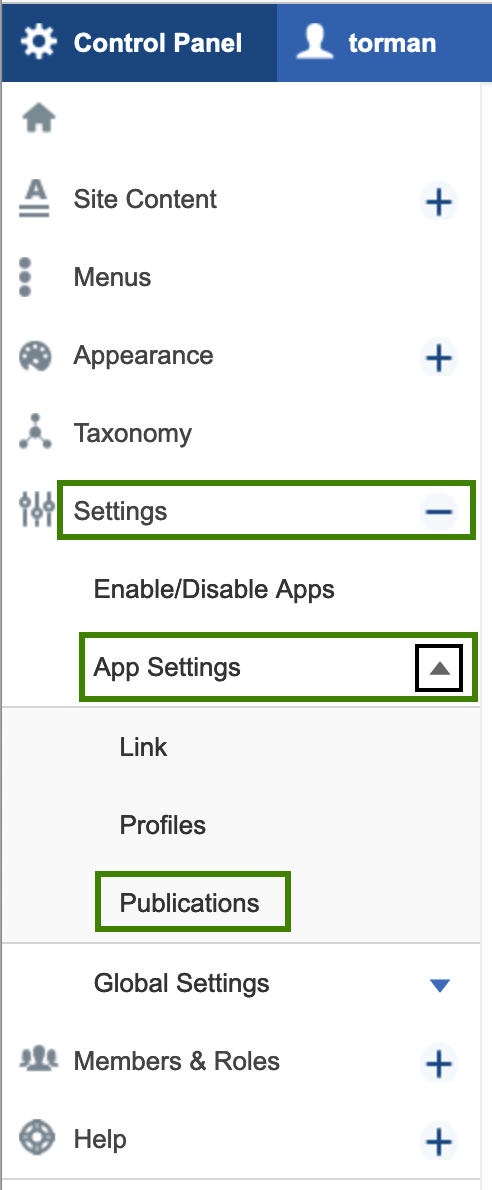Introduction
This guide will help you think through the content you may want to include in your OpenScholar site. Review your template as a guide for suggested content areas. You may choose to replace the default content with your own or remove any widgets you don't need. It's also important to have a good understanding of the various content types supported by OpenScholar. View these widget examples for ideas.
Some of the items below are tasks to prepare your site. Others provide space to include web copy you’ll later paste into your site or suggestions to create a separate file for content. This link will take you to a recording of Part One: Preparing Content for your Open Scholar Site.
Using AI to Generate Content
The most time consuming aspect of putting together a website is writing web copy, whether it's a summary for your About page, description of your research, or writing a personal bio. You may be able to greatly reduce the time it takes to gather this content by using AI. Chat GPT, Perplexity.ai, and Microsoft CoPilot are some of the resources to try. Enter a prompt such as, "Write a description of the top three resources areas for My Lab at My Institution" and see what it generates. Copy and paste it into your website then edit it to your liking.
Site Examples
It often helps to see some examples of how others have built their websites. Here is a small sampling of sites to check out:
NMM/OMM Research Department (WesternU - COMP)
Advancing Quality and Uniform Access through the Social Sciences at the University of South Florida
Parkinson's Disease and Movement Disorders Center at BIDMC
Francesca Fiorani at UVA
SEO (Search Engine Optimization)
OpenScholar’s motto is “Findable Research is Fundable Research.” Your site is optimized to rank high in search engine results. This is done in multiple ways, such as automatically displaying well on mobile devices, accessibility, taxonomy, speed, and security. Another way is through automated meta tagging of your content. Just as your site’s structure was set for you, tagging of most of your content is also done automatically.
There are things you can do to make your site as effective as possible. Since the purpose of having a website is to be found, you don’t want SEO to be an afterthought. Begin with the end in mind—how do you want to be found on the web?
Here are 11 tips for ensuring your site is optimized for the best results.
- Write a description for your site that uses keywords people may use when searching for your work in Google. What would someone type into the search bar? What do you want to be known for? Once you have a description ready, include it on your home page, and follow these steps to include it in the SEO section:
- step 1 - Go to Settings>Global Settings>SEO
- step 2 - Add your site title and logo
- step 3 - Enter your description in the field provided
- Include Meta Descriptions for Pages. Like your site meta description, a Meta description on your pages is what appears under the link to your page in a search. You want to be clear and succinct, telling visitors the value of the page so they’ll feel compelled to click your link, even if it doesn’t appear 1st in results. Include 1-2 keywords in the description and keep it under 160 characters so it doesn’t get cut off in search results.
- Use images whenever possible, especially unique images such as photos of your lab or research. Not only do images enhance your content, but they can also send people to your site via Google Images. Make sure they are high quality, relevant, and include a title and alt text. Semrush offers these tips for writing effective alt text:
Be descriptive: Describe the image in as much detail as you can. Imagine you are describing it to someone who can't see it. In addition to being helpful for search engines, this also helps those who use screen readers better understand images.
Be unique: Every image on each page should have unique alt text.
Be relevant: Just like keywords in your content itself, you want to write natural-sounding alt text. This means you don’t need to stuff keywords into your alt text. - Create titles and headings that use keywords someone may enter in a Google search.
- Incorporate keywords and related terms in the body of a page. You can find these by entering a search phrase in Google and looking at the section “Related searches.” Write them into the page naturally. Repetitive keywords have the opposite effect because they appear to Google as spam.
- Use internal links and anchor text. Internal links are links that point to other pages on your site. For more on how internal links boost SEO, view this article.
- Include good anchor text. Anchor text is a text that is hyperlinked. Best practice is to keep it under five words and relevant. You can use your brand name, brand names with keywords, related keywords, etc. An example would be “Visit the OpenScholar Training Calendar” as opposed to “To register for training click here.”
- Create shareable content. Research findings, interesting articles, etc., all help to drive traffic to your site.
- Use simple language and sentence structures. Sites with Flesch readability of scores averaging 76, which means someone between the age of 13 and 15 can understand them, appear in the top 10 of search results.
- Update your site often. Stagnant websites rank lower in Google searches than sites that are frequently updated.
- List editors and contributors. This lends credibility and trustworthiness to your site.
- Use video and interactive media, like slideshows.
Site Description
Write your site description here. You can add it to your site by going to Settings>Global Setting>SEO and pasting it in the Meta Description field.
Bibliographic Format
Once you set your citation style, every publication you add will automatically have the correct format applied. To set your citation style, follow these steps:
- Step 1: Log into your OpenScholar site
- Step 2: From the Control Panel, click on Site Settings>App Settings>Publications
- Step 3: Check the radio dial button next to your preferred bibliographic format
- Step 4: Establish any other preferred settings
- Step 5: Click Submit

Publications
Prepare a file including your publications to import into OpenScholar. The following file types are supported: BibTeX, EndNote X3 XML, EndNote 7 XML, Endnote tagged, PubMed XML, PubMed ID List. You can export a list of publications from different repositories, such as Google Scholar. The steps are outlined in this document: Exporting Publication Citations From Google Scholar.
To import your publications, follow these steps:
- Step 1: Log into your OpenScholar site
- Step 2: From the Control Panel, click on Site Content>Import>Publication
- Step 3: Locate your file
- Step 4: Select the file type
- Step 5: Click Submit
You can always add publications individually by going to Site Content>Add>Publication.
Files
Files in OpenScholar refer to any images, videos, or documents you add to the site. You can upload these in bulk (i.e., headshots of everyone on your research team) by going to Site Content>Add>Files. Files can also be added directly to any page you create. These will appear on the page as well as in the Files section.
From the Files section, you can replace files, add captions, or go to Usage to see where in your site the files are being used.
Create a folder where you will add any files you intend to include in your OpenScholar site. Be sure images are of high quality.
About
What would you like on your “About” page? Include information such as your name/lab name, title, phone, email, office hours, bio, CV, etc.
Research
Describe your areas of research. Consider any images or videos that will add interest to this page, then add these to your Files.
Teaching
List any classes you’d like to add. To see what fields are available, go to Site Content>Add>Classes. List your classes in the order you’d like them to appear in your site.
People
If you have a team, you may want to request specific information from each person and save their responses to a folder. Information may include their bio, links to a website, contact information, etc. To view available fields, go to Site Content>Add>Person.
Careers
If you’ll include information related to job opportunities, add that here. Your state may require that you disclose hiring salaries.
News & Updates
What news or updates would you like to include, if any? You can upload News in bulk through file import.
- Step 1: Log into your OpenScholar site
- Step 2: Go to Site Content>Import>News
- Step 3: Download the template
- Step 4: Fill out the spreadsheet and save it as a .CSV file
- Step 5: Locate the file
- Step 6: Click Submit
Please refer to our documentation on best practices for importing content.
Renaming Menu Items
Would you like to rename or remove any menu items? Remember that the content type must remain the same.
| Current Name | News Name | Remove (X) |
|---|---|---|
| About | ||
| Publications | ||
| Research | ||
| Teaching | ||
| People | ||
| News & Updates |
Grants
What information do you need to include related to grants? Consider any information related to NIH funding, projects, etc.
Adding Apps
Would you like to add any of the following to your site? If so, where would you like them to appear?
| Apps | Yes, Add (X) | Where (Main menu link, Submenu item under _______) |
|---|---|---|
| Blog | ||
| Software | ||
| Event | ||
| FAQ | ||
| Link | ||
| Media | ||
| Presentation |
Taxonomy & Filter Widgets
| Vocabulary | Terms |
|---|---|
| Vocabulary | Terms |
|---|---|
Examples:
| Vocabulary | Terms |
|---|---|
| Roles |
Alumni |
| Collaborators | |
| Faculty | |
| Graduate Student | |
| Postdoctoral Fellow | |
| Primary Investigator | |
| Undergraduate Students | |
| Visiting Students | |
| Research Focus | Bioarchaeology |
| Chronology Archaeology | |
| Eurasian Prehistory Archaeology | |
| Historical & Classical Archaeology | |
| Paleolithic Archaeology | |
| Field Archaeology | |
| Classical Archaeology | |
| Near Eastern, Biblical Archaeology | |
| Underwater Archaeology |
Glossary
Here are some terms you’ll come across in your OpenScholar site:
- Themes/Templates - The design of your site, a pre-set layout with your organization’s branding
- Drupal - The CMS (Content Management System) which is the backbone of your site
- Nodes - Drupal term for pages of content
- Menu - Links at top of site (Home, About, Publications, etc.)
- Layouts - How the page is laid out–what goes where. Layouts contain widgets.
- Widgets - Blocks of content that form the Layout
- Taxonomy - Categories. Provide ways to search for content.
- Files - Library of any image, document, video added to your site.
- Book - Group of pages

